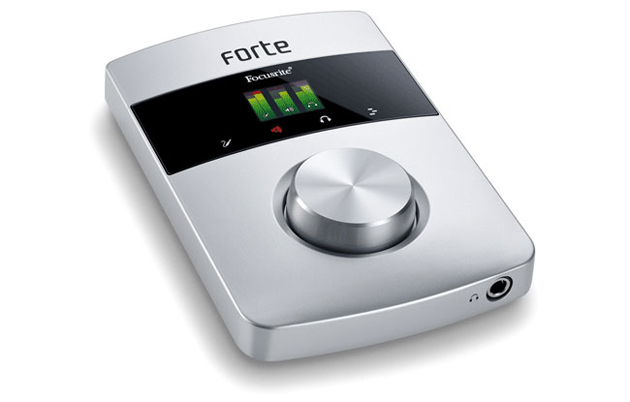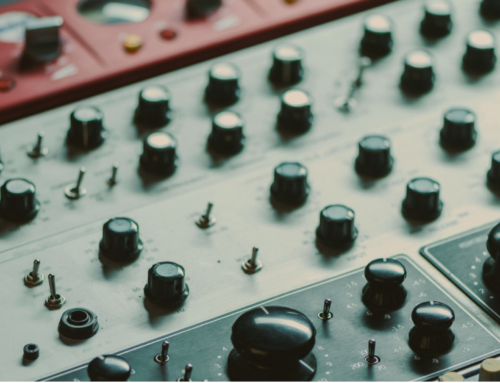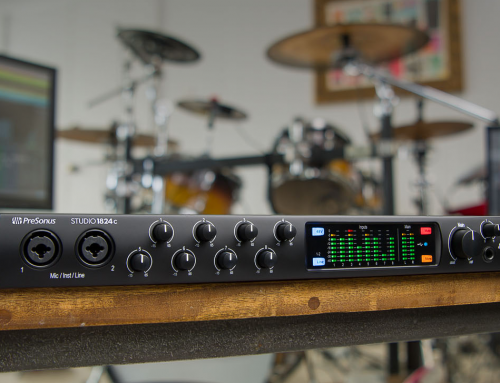 Out of experience, I can attest that, when it comes to making music, there are musicians and there are producers. But while the guy who knows his way around the recording studio equipment can attempt to learn piano and theory enough to write a decent synth line, the musician is lost in a convoluted series of software and hardware configurations. For the musician looking for straightforward audio equipment, the Focusrite Forte Audio Interface is, perhaps, one of the easiest of such products to use.
Out of experience, I can attest that, when it comes to making music, there are musicians and there are producers. But while the guy who knows his way around the recording studio equipment can attempt to learn piano and theory enough to write a decent synth line, the musician is lost in a convoluted series of software and hardware configurations. For the musician looking for straightforward audio equipment, the Focusrite Forte Audio Interface is, perhaps, one of the easiest of such products to use.
Focusrite considers its Forte Audio the next generation for the USB audio interface. This 2 in/4 out device is made for both Mac and Windows systems, and as with many Focusrite products, the Forte Audio Interface starts with a foundation of past successes (and excellent sound quality) and essentially takes it all up a notch – better sound, an Organic LED display, and a 24-bit/192kHz resolution.
 In checking out this gear, I’ve found that, regardless of skill level, the Forte Audio Interface has several assets. A compact, easy-to-use design, a larger dynamic range, and reliability are just some of its pluses. On a more specific level, the Forte Audio Interface just makes using it simpler. As a USB 2.0 device, it combines 24-bit A-D and D-A converters, and offers the user full control with a large, multi-use knob.
In checking out this gear, I’ve found that, regardless of skill level, the Forte Audio Interface has several assets. A compact, easy-to-use design, a larger dynamic range, and reliability are just some of its pluses. On a more specific level, the Forte Audio Interface just makes using it simpler. As a USB 2.0 device, it combines 24-bit A-D and D-A converters, and offers the user full control with a large, multi-use knob.

From looking at gear with a main knob or similar center point, I can tell you that this feature is both beneficial and a drawback. On one hand, the singular control aspect may be assigned too many features and functions and, for operation, requires essentially its own manual. On the other, it’s simplicity without too many knobs and buttons. The Forte Audio Interface is not just a key feature for functionality, it works with four touch-sensitive icons for preamplifier and output functions. Save for cables, connectors, and software, this aspect is the main feature you’ll have to master – and Focusrite makes it fairly straightforward to do so.
 Each icon – input, speaker, headphones, and tracking – essentially offers two hardware functions through a simple touch or hold. For the input icon, for instance, pressing it once yields the digital metering mode, while holding it down offers access to the input menu for selecting, via the knob, the necessary input. For the speaker function, which is activated just by touching the next icon, the knob controls the volume; much like the input feature, holding down the speaker icon gives access to a relevant menu. While the headphones icon has a similar, easily accessible combination of features, the fourth, or tracking, option provides full information for the device (by a touch) or gives the option of configuring all features (holding).
Each icon – input, speaker, headphones, and tracking – essentially offers two hardware functions through a simple touch or hold. For the input icon, for instance, pressing it once yields the digital metering mode, while holding it down offers access to the input menu for selecting, via the knob, the necessary input. For the speaker function, which is activated just by touching the next icon, the knob controls the volume; much like the input feature, holding down the speaker icon gives access to a relevant menu. While the headphones icon has a similar, easily accessible combination of features, the fourth, or tracking, option provides full information for the device (by a touch) or gives the option of configuring all features (holding).

As far as software goes, the Forte Control application comes with the device, and it, too, is controlled remotely by the knob. Similar to the hardware, the software is straightforward, with just three tabs – the speaker, headphones, and “?” for seeing your configuration.
Aside from its knob and software, the Forte Audio Interface offers ease of setup. A breakout cable with locking connector is used for mic, instrument, and line inputs and isn’t needed for playback, while a balanced line and independent headphone input are part of the device. Such a configuration means the inputs are always connected and eliminates the inconvenience of re-patching.





